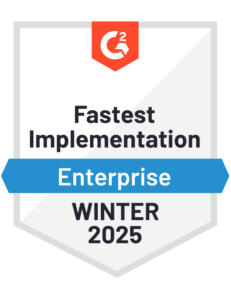What is Bad Debt Expense?
Blog post
Share
A bad debt is a debt that is no longer collectable because, for whatever reason, the debtor no longer has the capacity to fulfill their obligation. While common sense may suggest that a bad debt is a loss, it is recorded in the company books as an expense, alongside administrative costs, marketing and employee benefits.
Bad debt expenses are an unfortunate part of doing business. The alternative is to never extend credit to customers, but most businesses choose to extend credit to customers to avoid losing good customers or generating bad word of mouth.
Example of Bad Debt Expense
Let’s say Company X declares bankruptcy because it can no longer pay its outstanding bills. The nature of the bankruptcy proceeding means that some of the company’s creditors will simply not get paid. As a result, the uncollected debt will be entered into their books as a bad debt expense.
Why a Bad Debt Expense Is an Expense
Business expenses are the cost of running a business. In that sense, they are considered almost inevitable. On the other hand, business losses are not necessarily inevitable. Therefore, even though bad debt shares characteristics with both expenses and losses, it ends up being categorized as an expense.
Recording Bad Debt Expense
A bad debt expense will be recorded in the general or administrative expense section of the company’s income statement, although the various entries made to record the expense may well be spread out across several financial statements.
Calculating Bad Debt Expense
When it comes to calculating bad debt expenses, there are two methods in general use: the write-off method and the allowance method. Using the write-off method the bad debt is written off as soon as the debt becomes uncollectible. With the allowance method, the debt is estimated, and that estimate is continually revised over time.
More About the Write-Off Method
While it records the exact amount of uncollectible debt, the write-off method fails to adhere to the matching principle used in accrual accounting and recognized by GAAP (generally accepted accounting principles).
That’s because, while the matching principle requires expenses to be matched to related revenues in the same accounting period, the write-off method often leaves open the question of when the expense occurred because the bad debt is reported at the time the account receivable is written off, not necessarily when the debt was created.
The write-off method is appreciated for its simplicity and the fact that it is based on an actual amount. On the downside, the write-off method can lead to balance sheet inaccuracies and an overstatement of accounts receivable.
More About the Allowance Method
The allowance method enables companies to account for anticipated losses which helps put guardrails around any overstatement of potential income. A company will estimate how much of its receivables from the current period it anticipates will become delinquent.
One advantage of the allowance method is that accounts receivable are reduced without having to actually credit accounts receivable, since exactly which invoices will end up uncollectible is unknown. In addition, the allowance method enables companies to adhere to the matching principle and portrays a more accurate view of company financial statements.
On the downside, the allowance method is more labor intensive, and it opens the gate to more calculation errors down the line. In addition, an extra ledger of provision must be maintained that is not necessary with the write-off method.
Summary
The bad debt expense is considered part of the cost of doing business. Any business that extends credit to its customers is likely to accrue bad debt expense. Because not everyone will be able to pay off the debts they accrue, a portion of accounts receivable can be earmarked as bad debt.
While most companies will account for the bad debt expense using the allowance method, a significant percentage will account for bad debt using the direct write-off method. Though it must be said that this method is not allowed under GAAP.
Contact Trintech
Trintech financial close management software enables companies to gain meaningful insights into their financial data, automates manual processes, and simplifies tasks such as accounting for bad debt expenses.
Learn more in our Finance & Accounting Glossary






